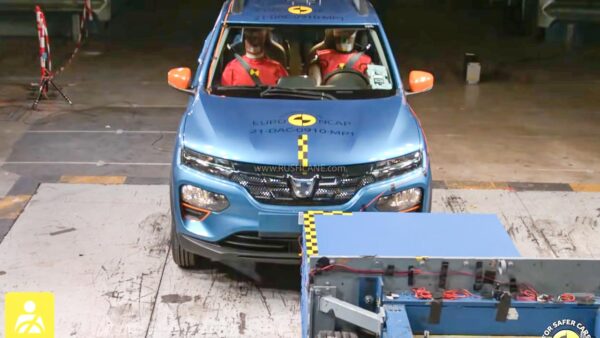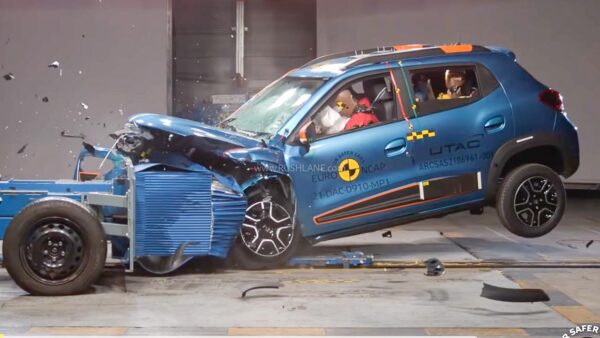
In October last year, Renault Kwid electric car made its global debut in Europe – As the Dacia Spring EV
Renault launched their most affordable electric small car under the brand name of their subsidiary Dacia in Europe. Called Dacia Spring, it is available in two trims of Comfort and Comfort Plus. The base Comfort trim costs €10,920 (Rs 9.3 lakh). Top variant is priced at €12,220 (Rs 10.42 lakh) in Germany. These prices are inclusive of govt grant of about €9,500 (Rs 8.16 lakh).
The Dacia Spring electric is basically the European version of China’s Renault City K-ZE and an electric version of India’s Renault Kwid. It is among the most affordable electric vehicle sold in Europe. Until now, safety rating was not available.
Renault Kwid Electric Crash Test By Euro NCAP
Euro NCAP has crash tested the Renault Kwid electric car, and given it a 1 star safety rating. The model that was tested weighed 970 kgs, and came with dual front airbags. It also got side head airbag and side chest airbag – for both the driver as well as front passenger.
In their comments for adult safety, Euro NCAP stated, “The passenger compartment of the Spring remained stable in the frontal offset test. Readings of several parameters in the dummies’ legs were high, indicating poor protection, and structures in the dashboard presented a risk of injury to occupants of different sizes and to those sitting in different positions.
Protection of the driver dummy’s chest was also rated as poor, based on readings of chest compression during the test. The pelvis of the driver was also poorly protected with dummy readings exceeding recommended values. Analysis of the deceleration of the impact trolley during the test, and of the deformation of the barrier afterwards, revealed that the Spring would be a benign crash partner to other vehicles.
In the full width rigid barrier test, the head of the rear passenger was penalised for the extent to which it moved forward, and protection was rated as poor. Chest protection of both occupants was rated as marginal, based on measurements of compression. In both the side barrier test and the more severe side pole impact, rib compression indicated marginal levels of chest protection, but that of other critical body areas was good.
The Spring is not equipped with a centre airbag to protect against occupant to occupant injuries in side impacts. Tests on the front seats and head restraints demonstrated good protection against whiplash injures in the event of a rear-end collision.

However, a geometric assessment of the rear seats indicated poor whiplash protection. The Spring has an advanced eCall system which partially fulfilled Euro NCAP’s requirements, and the car has no multi-collision braking system to prevent secondary impacts. The score was penalised for the high forces needed to open the door post-impact.”
Renault Kwid Electric / Dacia Spring – Specs
It sports a grey body colour with fluorescent orange accents and gets high ground clearance, faux skid plates and an aggressive bumper design. All LED lights are seen at the front while there is a horizontal strip positioned on the upper section with 4 graphic features built into the bumper. The rear sports 4 full LED lights with double Y effect.
Dacia states that this Spring Electric will be ideally suited for semi urban, urban use and is directed to both fleet and private buyers. It is positioned under the Dacia Sandero. It measures 3.37meters in length, 1.57m wide, 1.48m tall, and has a 2.4m wheelbase. Ground clearance is at 151mm.
Both variants are powered by the same battery and motor which delivers 45 Hp and 125 Nm. It has a claimed range of 305 kms in city and 230 kms combined as per WLTP cycle. It does a 0-100 kmph in 19.1 seconds and as a top speed of 125 kmph. Charging via an AC charger is achieved in 4 hours while via a DC fast charger the EV can be charged from 30 to 80 percent in 30 minutes.

